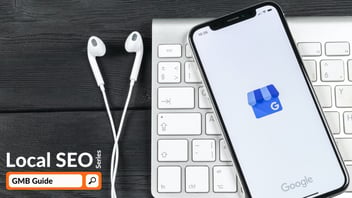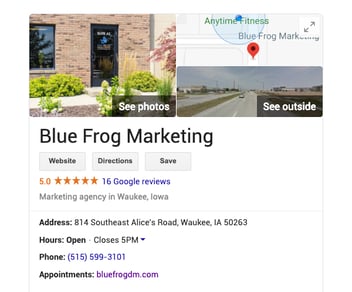If you think your Google Business Profile (GBP), formerly known as Google My Business, is all set and you don't need to worry about it, think again. Even if you’ve already optimized your profile, following these tips will help ensure you're getting the most out of your Google Business Profile in 2022. As local SEO continuously evolves, staying on top of current trends is critical to continue ranking well.
Consider audience intent.
Google has been doing a better job of matching its search results to what users are really looking for. They no longer just show links based on keywords but also take into account user intent when deciding which site, listing, or webpage to display first. For example, when you search "best car dealership" Google understands that you're not looking for the best dealership in the world, but you're interested in finding the best dealership in your vicinity. Google's serves local business listings based on data it’s collected. Understanding this and incorporating it into your optimization strategy can make the difference between a user clicking onto your listing or your competitor's.
Update your GBP profile frequently.
It’s important to keep your Google Business Profile up to date at all times. The goal of a search engine results page (SERP) is to serve the most relevant and up-to-date information. To appear near the top of the list, you’ll need to make sure your GBP profile is always current.
Every industry has its own strategies and best practices for optimization, but making sure your Google Business Profile has updated hours (especially with the need to make transitions on the fly) is a good start. Also, make sure to indicate when your business will be closed for holidays; you wouldn't want customers calling or showing up to your location and expecting to do business when you're closed.
Ask your customers for reviews.
Customer reviews are another element that can impact your GBP’s online presence. Sometimes, it can feel a little awkward asking customers to write reviews, but Google wants to highlight listings for businesses with good reputations. So, getting reviews from your customers can help your business appear ahead of your competitors’ in SERPs. While some SEO experts promote the strategy of accumulating a large quantity of reviews, it’s best to aim to get high quality reviews that mention keywords related to the products and/or services you provide. This helps Google understand the nature of your business so it can put your listing in front of more of your potential customers.
Interact with your reviews.
In addition to getting reviews, business owners should be responding to them in a timely manner. Not only is it good for your audience to see you're active and listening to feedback, but Google recognizes this as good practice as well. If you get a bad review, don't be afraid to reach out and ask them to contact you individually to discuss their feedback. When you get good reviews, thank the authors for doing business with you and taking the time to share their experiences.
Add relevant categories.
Within Google Business Profile, there are over 4,000 distinct company categories to select from. Because Google wants to keep things straightforward and organized, you can only pick one primary category and ten additional ones. The list is always being updated, so it’s important to check regularly to make sure the business categories you’re using remain the most relevant. If your website is optimized, Google can already develop a fairly clear picture of the services your business offers using its sophisticated algorithm. However, manually selecting business categories lets you ensure they’re always as accurate as possible.
Add descriptive visuals.
Up-to-date images are an important part of your profile, considering the positive correlation between the number of pictures a profile has and the number of organic impressions it receives. Start with high-quality images of your logo, photos of the inside and outside of your location, and pictures of your team. These will give users a good idea of what to expect if they visit in person.
The impact of photos and the types of photos that are important to include vary by industry. Hotels should add images that show room options and include descriptive alt text. For health care providers, images of the waiting room can help prospective patients get a feel for your facility before they show up for an appointment. When selecting images, keep your customers in mind. Consider what makes them choose your business over a competitor, and make sure to provide them with plenty of visuals to help them make their decisions.
Before uploading images, you can use Google's Vision AI to see how Google’s algorithm interprets them. This tool can reveal whether elements in photos are faces (and, if so, what expression a face conveys), understand text within an image, and determine whether the image meets its safe search criteria.
The Growing Value of Organic Traffic
As data privacy concerns continue to rise and paid search becomes less targeted, organic traffic becomes even more valuable. The increased focus on data privacy issues will leave marketers with less user data to target with ads. This makes optimizing your GBP for organic impressions an even more valuable part of your digital marketing strategy.
Google Business Profile is free and easy to get started. However, it is just a small component of an effective local SEO strategy. To learn more about how to grow your presence online, subscribe to our blog. To learn more about local SEO strategy, download our Local SEO Checklist ebook.



